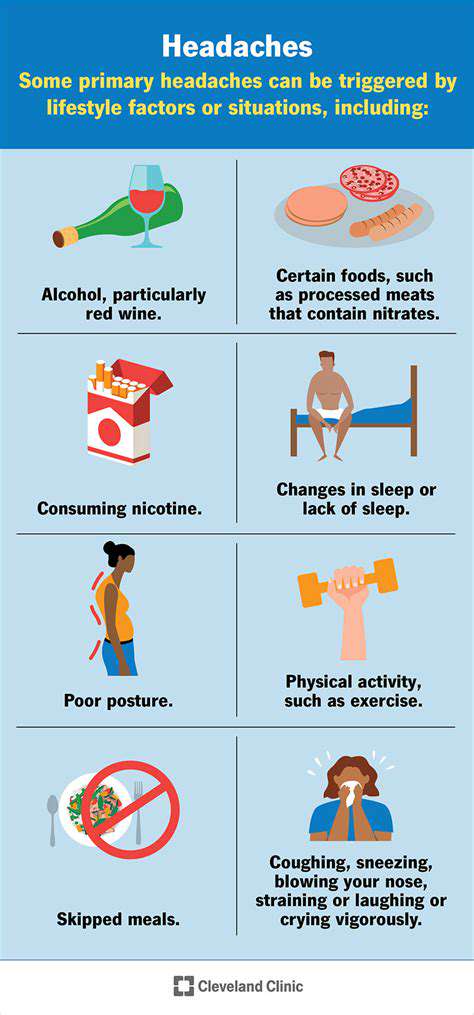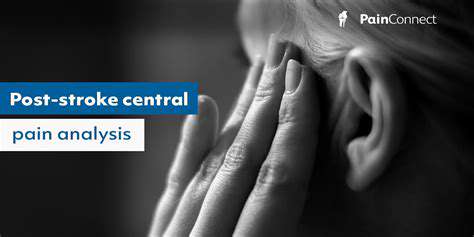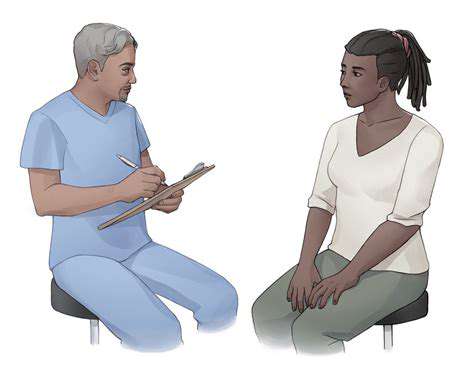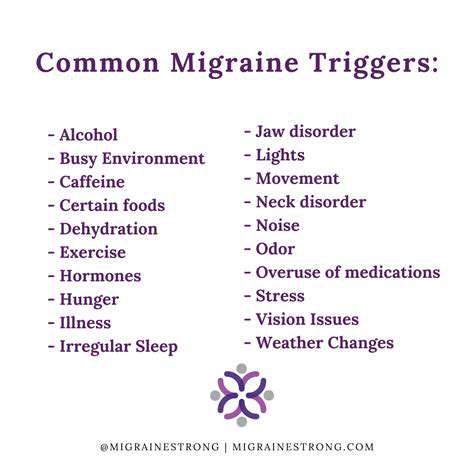Knowledge is Power: Understanding Your Headache Condition
Understanding Different Headache Types
Headaches plague countless individuals, cutting across age groups and demographics. Recognizing the distinct categories of headaches proves essential for proper care and mitigation. Migraines, for example, manifest as pulsating pain, frequently localized to one side of the head, coupled with nausea, vomiting, and heightened sensitivity to light and noise. These debilitating episodes can disrupt daily routines, demanding specialized approaches for prevention and alleviation. In contrast, tension headaches typically present as a constant, squeezing discomfort encircling the head, often arising from stress or improper posture. Pinpointing your particular headache variety forms the foundation for crafting an individualized treatment strategy.
Cluster headaches represent an even more severe form, featuring excruciating, incapacitating pain usually centered around one ocular region. These attacks commonly coincide with excessive tearing, ocular redness, and nasal blockage. Spotting these telltale signs enables quicker medical intervention, enhancing treatment efficacy. Moreover, distinguishing between these and rarer variants like ice-pick headaches proves critical for precise diagnosis and customized therapeutic approaches.
Identifying Headache Triggers
Numerous elements can precipitate headaches, spanning from external stimuli to nutritional habits. Stress—both psychological and physical—ranks among the most prevalent headache instigators. The strain and tension accompanying stressful situations frequently provoke muscular contractions in cranial and cervical regions, worsening existing headache conditions or sparking new ones. Dietary choices also exert significant influence; particular foods including aged cheeses, processed meats, and chocolate may trigger headaches in predisposed people. Maintaining a detailed headache log to record foods and activities preceding an attack proves invaluable for identifying triggers and formulating preventive measures.
Environmental components can similarly contribute to headache onset. Weather variations, especially abrupt temperature declines or barometric pressure shifts, occasionally precipitate headaches. Likewise, exposure to potent odors—such as fragrances, cleaning agents, or smoke—can provoke headaches in certain individuals. Through meticulous tracking of environmental factors and eating patterns, people can gain deeper insight into their personal triggers, enabling proactive measures to minimize potential headache episodes.
Sleep deprivation, caffeine withdrawal, and even specific medications may also factor into headache development. Comprehending the complex interplay of headache triggers remains vital for creating holistic prevention and management tactics. This understanding allows individuals to take preemptive action to reduce both headache occurrence and severity.
Effective Management Strategies
Successful headache management requires a comprehensive methodology incorporating lifestyle modifications, preventive actions, and timely medical consultation when warranted. Adhering to consistent sleep patterns and implementing stress-reduction practices like meditation or yoga can dramatically decrease the probability of headache episodes. A well-balanced diet low in potential triggers such as processed foods and aged cheeses may also contribute to headache prevention. Regular physical activity, while advantageous for general health, additionally aids in stress control and circulation improvement, potentially diminishing headache frequency.
Non-prescription analgesics can offer transient relief for mild headaches. However, for more severe or recurrent cases, consulting a medical professional becomes imperative. They can evaluate possible root causes, suggest suitable treatments, and devise a personalized management blueprint. Seeking expert guidance proves crucial for detecting and addressing potential underlying conditions that might contribute to persistent or intense headaches, ensuring the most thorough and effective long-term management approach.


Managing Headaches Beyond Medication: Complementary and Alternative Approaches
Exploring Relaxation Techniques
Numerous headache sufferers experience relief through relaxation methods targeting the fundamental tension and stress exacerbating their discomfort. Controlled breathing exercises, progressive muscle relaxation, and mindfulness meditation can help soothe the nervous system and alleviate muscular tension in cranial and cervical regions. Integrating these practices into daily routines can substantially influence headache frequency and intensity, offering an adjunct to traditional pain management approaches.
Engaging in yoga and tai chi may also yield benefits. These gentle motions, paired with focused respiration, encourage relaxation and dissipate physical tension. Locating a certified instructor ensures correct technique and optimizes the advantages of these disciplines. Persistent application of these methods can produce lasting improvements in headache control.
Dietary Considerations and Lifestyle Adjustments
Specific foods and beverages can provoke headaches in predisposed individuals. Maintaining a headache journal helps identify potential instigators, including caffeine withdrawal, processed foods, alcoholic beverages, or particular cheese varieties. Implementing dietary modifications, such as reducing or eliminating trigger foods while embracing a balanced diet abundant in fruits, vegetables, and whole grains, can help minimize headache occurrence. Sufficient hydration remains equally important, as dehydration sometimes worsens headaches.
Establishing consistent sleep patterns, effectively managing stress, and incorporating regular physical activity constitute fundamental components of a comprehensive headache management plan. Prioritizing sleep hygiene, stress-reduction techniques, and integrating exercise into daily schedules creates a healthier physiological environment conducive to optimal functioning, potentially reducing headache incidents.
Addressing sleep disturbances, managing stress through mindfulness or alternative coping strategies, and including consistent physical activity all contribute to a healthier lifestyle supporting headache prevention and management.
Recognizing and minimizing stress triggers, practicing relaxation methods, and ensuring adequate rest all play substantial roles in decreasing headache frequency and severity. Maintaining regular sleep cycles, emphasizing stress management, and incorporating consistent exercise can dramatically enhance overall wellness and contribute to lasting headache relief.
Alternative Therapies and Complementary Treatments
Investigating alternative therapies like acupuncture, massage therapy, and biofeedback can provide supplementary avenues for headache management. Acupuncture, for instance, involves inserting fine needles at specific bodily points, which some practitioners believe stimulates the nervous system and alleviates pain. Massage therapy addresses muscular tension and promotes relaxation, mitigating stress factors commonly associated with headaches.
Biofeedback techniques teach individuals to regulate physiological responses such as muscle tension and heart rate, which might contribute to headache episodes. While these therapies don't replace conventional medical care, they can serve as valuable adjuncts to enhance overall headache management strategies. Thoughtful consideration and professional consultation should precede integration of these therapies into treatment plans.







